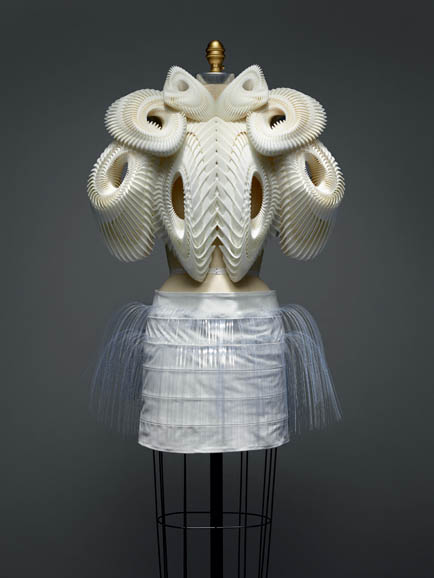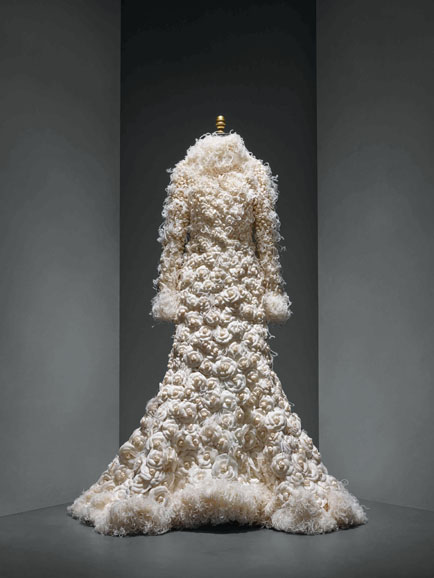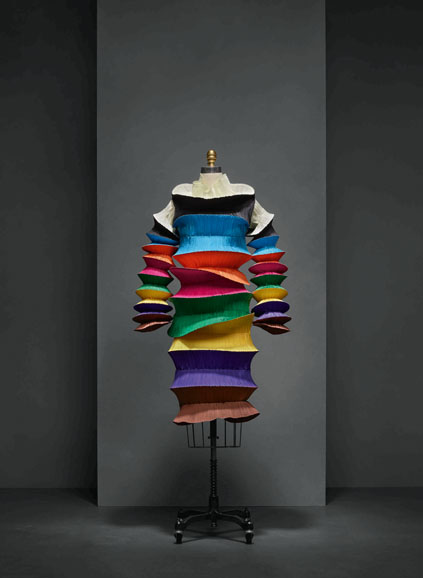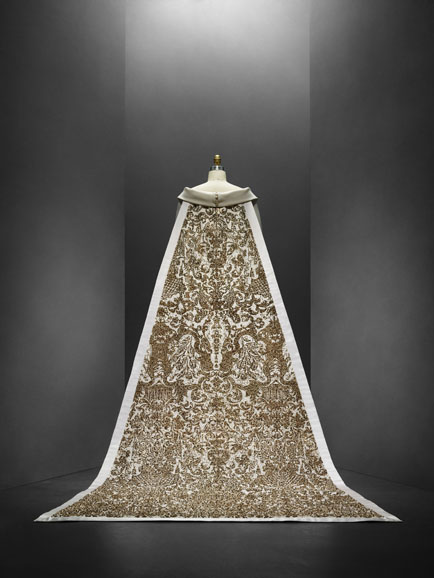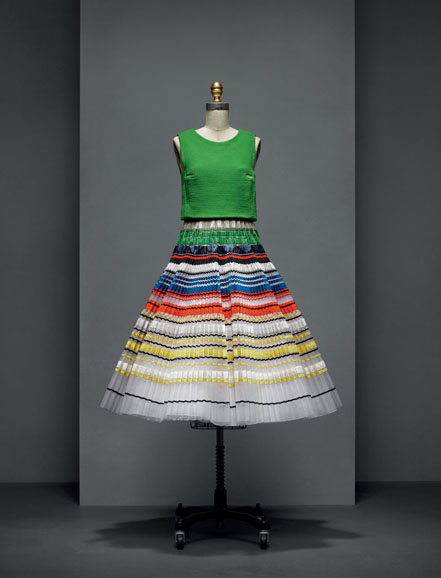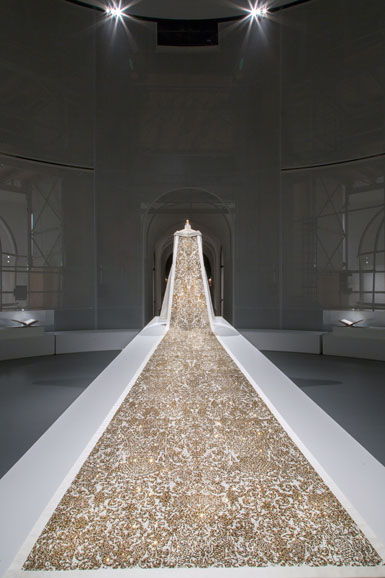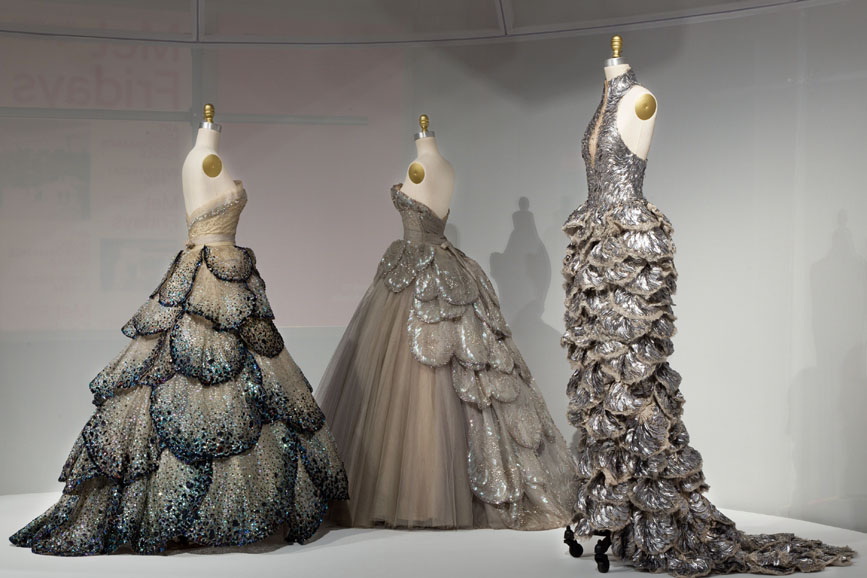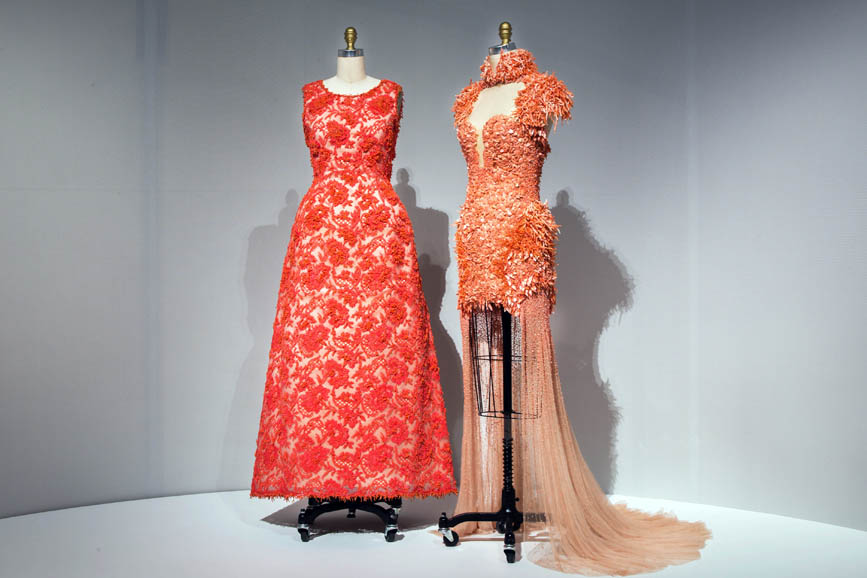If a dress is made by hand, it’s better than one made by machine… right?
That long-held belief is being challenged, in a most stylish manner, at The Metropolitan Museum of Art in Manhattan.
“Manus x Machina: Fashion in an Age of Technology,” the latest exhibition of The Costume Institute of The Met, instead examines the two methods of creation to propose that today, these approaches exist not only side by side but often together in fashions that propel the industry ever forward.
With a stunning array of fashions from around the world representing designs from the early 1900s through today, the exhibition is a name-checker’s delight with some 170 ensembles. Visitors will want to spend plenty of time, swooning over looks created by everyone from Coco Chanel to Karl Lagerfeld, Christian Dior to Issey Miyake, Halston to Balenciaga, Alexander McQueen to Marc Jacobs, Yves Saint Laurent to Raf Simons… and many, many more.
Filling galleries on the two floors of the Robert Lehman Wing, transformed here thanks to white scrims and evocative music by Brian Eno, the show truly transports the visitor.
If you like edgy looks in leather, they are here, but so are delicate looks dotted with florals, futuristic ensembles dripping with crystals and quirky picks fluttering with feathers.
With the Met Gala — the institute’s star-studded benefit held May 2 in conjunction with its exhibition’s opening — now a glittering memory, the spotlight returns to the fashions on hand and what Andrew Bolton, curator in charge of The Costume Institute, described in press materials as the focus of the impressive affair.
“Traditionally, the distinction between the haute couture and prêt-à-porter was based on the handmade and the machine-made, but recently this distinction has become increasingly blurred as both disciplines have embraced the practices and techniques of the other.”
It was a premise he expanded on during the press preview, adding “instead of presenting the handmade and the machine-made as oppositional… (the exhibition) proposes a re-thinking of the haute couture and prêt-à-porter.”
He noted that traditionally, the handmade has been associated with elitism and nostalgia, superior to mass-produced work.
In “Manus x Machina,” there is an exploration of designers who are breaking free “from usual confines,” Bolton said.
“For them, the hand and the machine are creative… They are employed in tandem. The hand and the machine work in combination.”
Indeed, the exhibition examines how today’s designers, from those in New York’s Garment District to the famed couture houses of Paris — and all places in between — balance their options, addressing style challenges with the ever-evolving methods and materials they feel will interpret their work best.
Visitors to the exhibition journey into this world of fashion and technology from the earliest days of haute couture in the 19th century, when the sewing machine was invented through the industry’s encounters with industrialization and mass production, through today, when available tools push new boundaries at every turn. It’s a world where long-treasured, by-hand techniques exist along with options that now include 3-D printing, computer modeling, bonding and laminating, laser cutting and ultrasonic welding.
To put it all in perspective, “Manus x Machina” is structured to pay homage to the traditional métiers of haute couture, such as embroidery or feather work, while also examining tailoring and dressmaking.
Throughout, there are case studies to explore particular fashions more in depth. In the lacework section, for example, Miuccia Prada’s prêt-à-porter dresses (2008-9) show how this contemporary designer taps into available resources.
In exhibition text, Prada noted that the lace was made by machines in Switzerland but the company appliquéd flowers by hand “to create a more three-dimensional effect.”
And, she added, “Usually, when you think of technology, you think about strange, futuristic processes. But technology can also be about finding a different type of lacework or embroidery.”
For anyone who questions the ability of the handmade and machine-made to live side by side — let alone in glorious style — they need look no farther than the exhibition’s showpiece, a 2014-15 haute couture wedding ensemble by Karl Lagerfeld for Chanel. The gown, complete with a 20-foot train, commands all eyes as it reigns over the exhibition’s center space, details of its intricate embroidery projected onto the dome overhead. The scuba-knit creation pulls the entire “Manus x Machina” premise into clear focus — the train is hand-painted with gold metallic pigment, machine-printed with rhinestones and finally, hand-embroidered with pearls and gemstones.
In its shadow, WAG scored a few exclusive moments with Bolton, the curator, as the exhibition’s dazzling press preview was wrapping up, and he shared that the goal of the show is indeed all about “challenging your expectations.”
And, he also hoped “Manus x Machina” proved what, as a curator in an art museum, he truly believes: “I take it for granted. Fashion is an art.”
No arguments here.
“Manus x Machina: Fashion in an Age of Technology” continues through Aug. 14 at The Costume Institute of The Metropolitan Museum of Art in Manhattan. For more, visit metmuseum.org/ManusxMachina.

